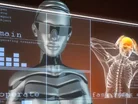Robotics and Health Care

Robots are the future. This inspires both excitement and fear among health care professionals. The fear of being replaced by superior technology is widely discussed among doctors and nurses. The potential does exist, but to date the use of robotics in health care has barely made a dent. Worldwide, less than two per cent of surgeries are performed robotically; however, the surgical robotic platform may be growing.
Currently, surgical robots provide a highly experienced surgeon with skills they cannot humanly possess, with the help of 3-D visualization. The robots provide enhanced precision through minimally invasive incisions, ultimately improving patient care and minimizing recovery time. Intuitive is focusing on urology and gynecology, Mako Surgical for knees and hips, and Mazor Robotics in spine (and eventually brain) procedures.
Robotics promise precision while distancing health care professionals from radiation-emitting fluoroscopy during procedures. Hansen Medical, Sterotaxis and Corindus are targeting vascular and electrophysiology labs with this proposition. The really unique and innovative technology is to come and could be held in the minds of current students. The Raven surgical robotic platform was funded by the US Army in pursuit of telerobotic surgery taking a highly trained surgeon in one location performing surgery on a remote patient. The Harvard Robotics Lab is working with the Raven’s open source software paired with powerful computing capabilities. This will enable beating heart cardiac surgery using real-time 3-D ultrasound imaging to guide surgical tools in tandem with the moving heart.
According to Michael Witham, Robotics expert and mentor for the Saguaro High School Robotics Team #4146, “Robots are also being introduced into health care to function similarly as nurses. They can be configured with AI to learn text-book ways to aid in patient care, imagine the Jetson's Maid. They can walk, talk, interact, and are as smart as all the nursing textbooks combined into one Wikipedia brain. Technology is not far from making that a reality. The benefit to robotic technology is eliminating human error, which makes up for a lot of mistakes in hospitals.”
This subject is far too expansive for one article. Look forward to more information regarding robotics in health care.
To learn more about robotic advancement in health care check out these articles:



